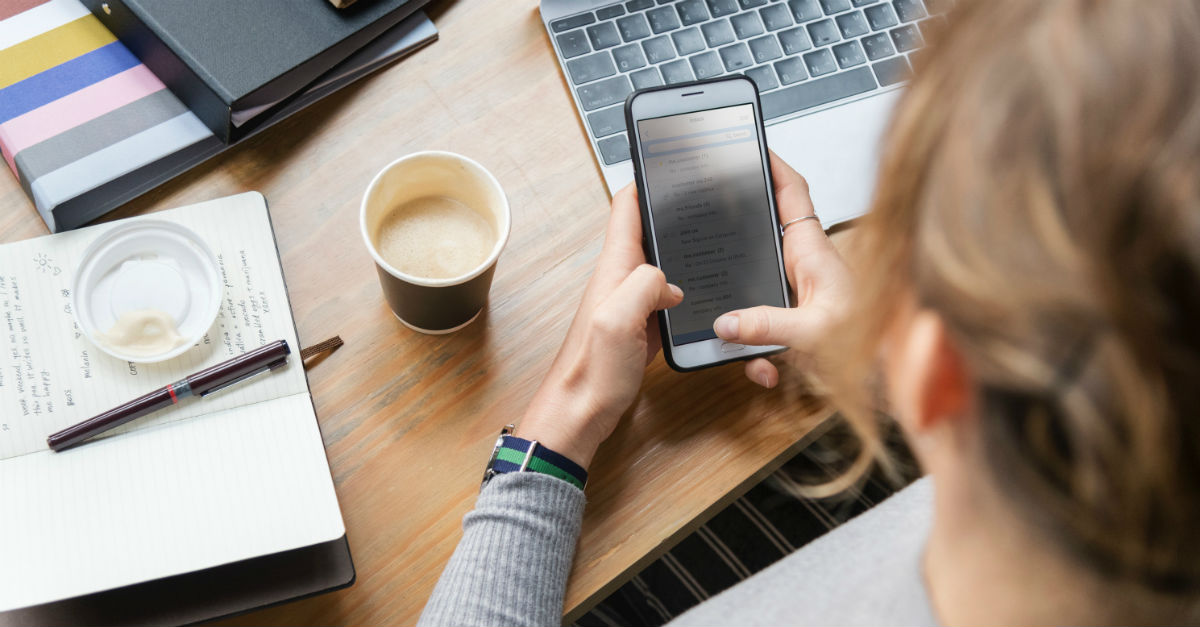10 Overlooked Smartphone Vulnerabilities

About 1 in 5 people care more about protecting their smartphone than their laptop, according to a survey from AlertSec.
For those people, here are 10 security issues they may have overlooked until now.
1. You Can Lose Your Smartphone
First, smartphones are vulnerable because of their form factor—they’re relatively small. It’s easy to lose them if they slip out of your pocket or purse, of if they are on the table at a restaurant, for example.
Research trusted ways to track a lost smartphone so that you can know what to do if it happens.
2. Not Downloading Patches and Updates
Skipping software patches, carrier updates, and app updates leaves your smartphone susceptible to security risks. When the notification comes across your screen, it’s time to update.
3. Not Reading Privacy Policies
Most people don’t read privacy policies. They just want to download something, click “OK,” and move on.
In fact, a research study highlighted by NPR that “98 percent of the participants that took (a mock) study didn't even notice” that if they agreed to the policy, they would have to give up their first-born child.
Contrast this with the fact that roughly half of Americans don’t trust the federal government or social media sites to protect their data.
Read privacy policies to know how your data is being collected and used.
4. Downloading Apps From Untrusted Sources
BGR reported that about one-third of people downloaded apps from untrusted sources in 2015.
Generally, apps should only be downloaded from official app stores, such as the iOS App Store or Google Play. Apps may also be downloaded from enterprise app stores since they have been vetted by the organization.
5. Not Having A Lock Screen
BGR also reported that a little over one-third of smartphone users “did not even set up a lock screen PIN or password to protect their devices.”
By not having a lock screen, anyone can snoop around your phone as they wish.
6. Not Checking Your Permissions
Both Android and iOS, the two major operating systems, allow you to control which applications have permissions to access things like your contacts, photos, and calendar.
Check your apps’ permissions. Then, toggle off the permissions that don’t affect the apps’ functionality.
7. Leaking Data
Data leakage occurs when information is not authorized to be transferred. A simple example, highlighted by CSO, is forwarding an email to an unintended recipient.
“According to specialist insurance provider Beazley, ‘unintended disclosure’ was responsible for a full 41 percent of data breaches reported by healthcare organizations in the first three quarters of 2017 — more than double the next highest cause.”
8. Social Engineering
One form of social engineering is phishing, which can result in malware infection, compromised results, and loss of data.
This happens when an attacker pretends to be someone the victim knows. The victim unknowingly provides personal information, giving the attacker everything needed to take advantage of the person.
9. Automatic Login
Tapping into an app and being logged in is convenient, but it has the potential to be harmful. If your device is stolen and doesn’t have a passcode, a bad actor can access your social media profiles and other services you log in to.
10. Not Hiding Lock Screen Notifications
Earlier in this post, we discussed more granular options to control your apps. Many apps offer the ability to show you an app has notified you without the specifics of the notification. Think about what your phone’s messages and notifications could contain, and whether any of that is sensitive.
Take a look at these potential vulnerabilities to protect your smartphone.

